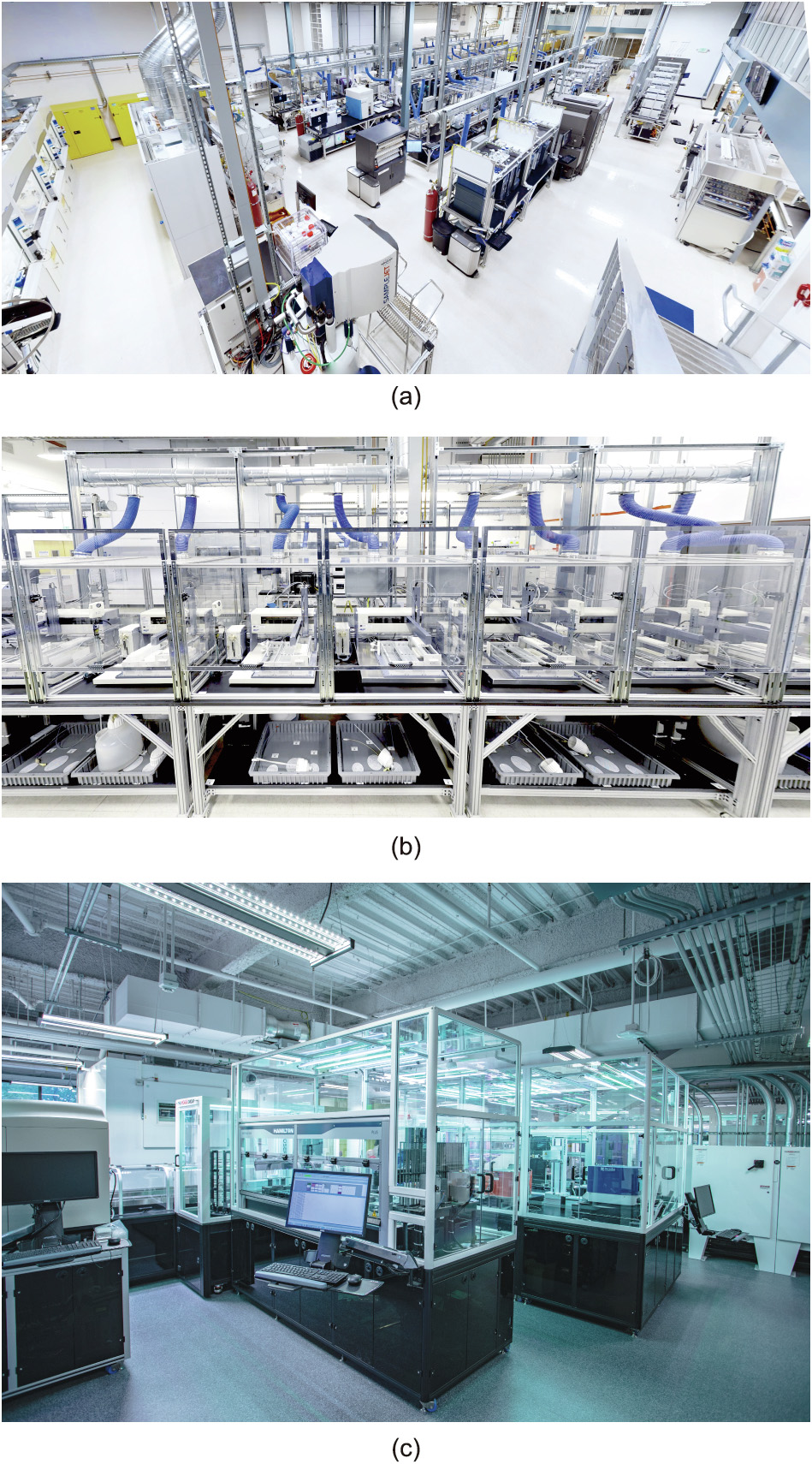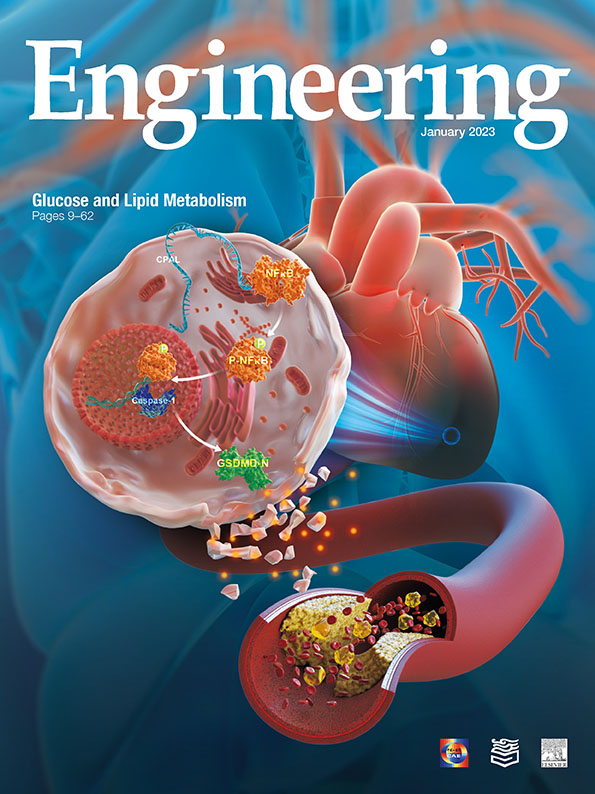Graduate students and scientists who spend long hours in the laboratory pipetting solutions and slogging through other repetitive, tedious procedures may feel like robots. But starting in the fall of 2023, researchers at one university, Carnegie Mellon University (CMU) in Pittsburgh, PA, USA, will be able to delegate the work to actual robots. The university is building a ‘‘cloud lab,” a 40 million USD scientific facility that is almost fully automated [1]. From remote computer screens, CMU users will be able to virtually direct the lab’s more than 200 scientific instruments to perform experiments. CMU will be the first university in the world to have a cloud lab [2]. A few commercial facilities offering a similarly wide range of automated laboratory procedures have existed for about a decade, and one of those companies, Emerald Cloud Lab of South San Francisco, CA, USA, is equipping the CMU facility and will operate it.
Cloud labs spare scientists from lab drudgery, increase their productivity, and have the potential to reduce research costs. By standardizing experimental routines, the facilities may also help address science’s reproducibility problem, wherein researchers have been unable to replicate many high-profile findings [3]. The labs could also be a boon for students training for scientific careers at schools that cannot afford to equip their own facilities. By expanding access to these users, cloud labs like CMU’s could help ‘‘democratize science,” said Rebecca Doerge, the Glen de Vries Dean of the Mellon College of Science at CMU, and head of the university’s cloud lab project.
The first commercial cloud lab to offer a wide range of automated laboratory services was Menlo Park, CA, USA-based Transcriptic, which launched in 2012; in 2019, the company merged with 3Scan to form Strateos, which currently operates cloud lab facilities in Menlo Park and San Diego [4–6]. Emerald Cloud Lab entered the market in 2014 [7]. When scientists use such cloud labs, they can remotely choose any combination of instruments to perform whatever experiments they want. This versatility ‘‘opens up the science” and allows researchers to be more creative, Doerge said. In contrast, there are other remotely operated labs that depend on automation to perform specific jobs, such as genetic engineering of bacteria [8]. In these facilities, all of the instruments are integrated to complete one process, Doerge said.
Scientists never have to set foot in a cloud lab to run an experiment (Fig. 1). Customers of Emerald Cloud Lab, for example, log into the company’s website and select which procedures they want to perform and under what conditions. Software then transforms their choices into a series of commands that control the lab equipment. Once researchers have shipped their samples to the lab, robots take over. The instruments—which include the basics such as balances and centrifuges, along with more complex devices like mass spectrometers, DNA sequencers, and peptide synthesizers—are mostly automated. The lab still requires a few human workers, who clean and maintain the equipment, add solvents and samples, and perform other tasks [9]. Consultants are also on call to ‘‘answer questions about experiments related to code and to troubleshoot malfunctioning instruments,” said Toby Blackburn, the company’s head of business development and strategy. In some prototype automated chemistry labs, artificial intelligence is helping researchers design and run experiments [10]. However, Emerald Cloud Lab does not offer advice about what procedures to perform, said Blackburn.
《Fig. 1》

Fig. 1. (a) Some of the more than 200 kinds of instruments in Emerald Cloud Lab’s facility in South San Francisco, CA, USA. (b) A row of automated devices in the Emerald Cloud Lab. (c) A view of the San Diego, CA, USA, cloud lab facility operated by Strateos. Human workers still perform some essential jobs, such as delivering samples to the instruments, but they are spared from tedious repetitive tasks like pipetting. Credit: (a, b) Emerald Cloud Lab, with permission; (c) Strateos, with permission.
The Emerald Cloud Lab facility operates 24 hours per day, every day of the year, typically running about 50 experiments at any one time, said Blackburn. He cannot reveal the identities of most of the company’s clients because of non-disclosure agreements, but they are ‘‘a relatively even mix of large pharmaceutical firms, biotech startups, and academic institutions,” he said. The cost depends on the type of customer and the number of experiments they want to run simultaneously. As an example, an account for a biotech start-up might begin at 24 000 USD a month, he said.
Justin Siegel, an associate professor of chemistry at the University of California, Davis, in CA, USA, was an early enthusiast of cloud labs and began using Transcriptic’s services shortly after the company opened. Siegel, whose research involves designing new proteins, saw several benefits in handing off routine lab work. For one thing, his lab, which already had more than one million USD of equipment that largely sat idle, would not have to invest in additional instruments. Another plus was that, at least initially, Transcriptic would perform the technique he wanted to conduct, a method for mutating DNA strands known as Kunkel mutagenesis [11], for about 25 USD per sample versus the 50 USD it would cost for Siegel’s students to do the work themselves. His lab also did not have to carve out the day or more required to carry out Kunkel mutagenesis. ‘‘There were awesome time savings and great cost savings,” Siegel said. He added that using the cloud lab was much cheaper than paying a contract research organization to take on the work [12]. These private laboratories, which typically do not have the same level of automation as a cloud lab, can handle a variety of experiments but are quite expensive, he said.
Using a cloud lab boosts the quality of research, Siegel said. His students no longer had to devote hours and hours to routine procedures. ‘‘These mind-numbingly boring protocols are the ones where mistakes are made,” he said. The students also had more opportunities to think about their projects and come up with new ideas. ‘‘I would rather pay them to do things where they use their minds rather than something a monkey could almost do,” Siegel said.
Doerge said that one of the biggest benefits of cloud labs is their potential to increase the reproducibility of research [13]. Cloud labs provide not only the results of experiments, but also a detailed record of the conditions under which the procedures were conducted, critical information for other scientists seeking to repeat experiments. Furthermore, to run a cloud lab experiment, researchers must furnish precise instructions on how to complete each procedure, which are then encoded in the commands for the lab robots [9]. Using the same code, the experiment can be repeated in exactly the same way.
Because of these advantages, the pharmaceutical industry, particularly startups that can avoid investing in their own expensive equipment, has boosted its use of cloud labs [14]. However, the cost of commercial cloud labs has been something of a moving target. They have been prohibitively expensive for many academic researchers, as well as for university and secondary school students. Early cloud lab enthusiast Siegel said he stopped using Transcriptic about five years ago when the company raised prices for academic customers. His students have since performed their own experiments and they are not happy about it, he said.
Doerge said that CMU saw several advantages to building its own cloud lab. It would reduce start-up costs for university scientists and enable researchers with disabilities to conduct lab work. The facility would also serve as an inducement for recruiting new faculty and students. By improving access to lab equipment, the facility would allow students to undertake their own experiments. And because the university’s cloud lab will include the same equipment and run the same software as Emerald Cloud Lab, students who become proficient at the CMU lab will be prepared for jobs at companies that contract with Emerald Cloud Lab. ‘‘We realized the cloud lab platform has the potential to be a big part of the future of science,” Doerge said.
The CMU lab will open to internal users in the spring of 2023 and to external users in the fall of 2023. At least initially, about 80% of the lab time will be reserved for students, staff, and scientists at CMU and their collaborators at other institutions. Life science start-ups in Pittsburgh will get the remaining 20%, Doerge said. These industry clients will be able to buy lab time for about 20 000 USD per month, similar to the price at the commercial Emerald Cloud Lab, but academics will get a substantial discount. CMU users will pay about 8000 to 9000 USD per month, and non-CMU academic researchers will pay around 12 000 USD per month. These fees will be enough to cover the costs of running the facility, Doerge said.
The university is already looking to expand access to schools and colleges that cannot afford advanced lab facilities, she said. A project led by Huaiying Zhang, a CMU assistant professor of biological sciences, will test whether the lab can benefit students at under-resourced high schools that have little money for science labs. Universities often offer programs for such schools, Zhang said, but they typically involve bringing the students to campus to do the lab work, which is expensive and involves complex logistics. But starting in the spring of 2024, a class of about 30 students at Central Gwinnett High School in Lawrenceville, GA, USA, will begin remotely managing basic biology experiments—such as measuring cell growth across different temperatures—at the CMU cloud lab. A grant from the US National Science Foundation will pay the lab costs. Zhang said that if the program is successful, she hopes to create a portal that would allow students at other schools to log into the CMU facility and launch their own experiments. ‘‘This can be very scalable if we can get more people involved,” she said.
More cloud labs could be on the way as well. Doerge said that several other universities have contacted her about opening their own versions, and the US government is also interested. Building a few federal cloud labs around the country could reduce the costs of government-funded research, she said, because granting agencies would not have to provide each scientist with money to equip a full lab.
So far, however, no government or university besides CMU has announced plans to build additional cloud labs. But the demand is there, said Siegel. If the price were right, he said, ‘‘I would go back in a heartbeat.”













 京公网安备 11010502051620号
京公网安备 11010502051620号




